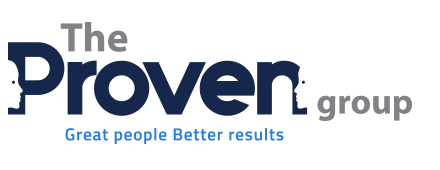With new laws highlighting the need to manage psychosocial risks, HR professionals are increasingly taking a proactive role in workplace safety. Here’s how to conduct a thorough psychosocial risk assessment to meet the latest standards and promote mental well-being in the workplace.
Since the introduction of the Code of Practice for managing psychosocial hazards, HR’s role in workplace safety has expanded, shifting beyond physical risks to encompass mental health concerns. This evolution requires HR to adopt a more strategic and holistic approach to managing these risks, treating them with the same urgency and method as physical workplace hazards.
As Sapphire Parsons, Senior Associate in Employment and Safety at Macpherson Kelley, explains, “The separation between HR and safety roles is fading. The new focus on psychosocial safety is pushing HR into uncharted territory, which now includes risk management.”
To help you navigate this shift, here are expert tips on how to conduct an effective psychosocial risk assessment.
- Start by Engaging Employees
A solid psychosocial risk assessment begins with open communication. Start by surveying employees to gather insights on common psychosocial risks such as workplace behaviour, job demands, role clarity, and working conditions like long hours or isolation. These surveys form the foundation of your risk assessment by identifying potential hazards.
Ongoing employee consultation is essential throughout the process, ensuring the most accurate data on workplace risks is collected. Understanding the daily experiences of employees, along with larger organisational issues, is key to uncovering risks that may otherwise go unnoticed.
“Psychosocial risk management requires us to examine factors like workforce structure, recruitment processes, and leadership dynamics, as all of these can contribute to mental health risks,” says Parsons.
- Assess the Severity, Frequency, and Duration
When evaluating the psychosocial hazards identified, consider the severity, frequency, and duration of each risk. For instance, is the risk a constant presence, or does it only surface during peak work periods? Are there particular teams or managers exacerbating the situation?
Breaking down these risks by department and employee role provides a clearer picture of the specific challenges different groups may face. Office workers, for example, may be more prone to interpersonal issues, while those in physically demanding roles could face risks tied to fatigue or isolation.
“You need to understand that risks will vary across your business, and that controls must be tailored to address each situation,” notes Parsons.
- Prioritise Action and Secure Leadership Buy-In
Once risks are assessed, your next step is to determine which control measures can feasibly be put in place. This may include actions like implementing fatigue management systems or establishing clear limits on working hours.
Leadership engagement is crucial for implementing these changes. When presenting the case for action, HR should highlight the risks of serious injury or mental health claims, which can have long-term financial and legal consequences.
“Psychosocial risks aren’t just about employee wellbeing,” Parsons explains. “They can lead to serious safety breaches, potentially placing executives at risk of prosecution. Mental health claims also tend to last longer than physical ones, leading to extended time off work and higher costs.”
By framing these risks in terms of legal, financial, and productivity impacts, HR can make a compelling argument for immediate action.
- Regularly Review and Improve Measures
Risk management is not a one-time task. Regular reviews of control measures are necessary to ensure they remain effective. Safe Work Australia recommends reviewing controls under several circumstances, such as when a new hazard emerges or when current controls are failing to minimise risks.
One effective way to monitor the ongoing success of your strategy is through follow-up surveys. Comparing results before and after implementing controls will give you direct feedback on their effectiveness. For larger organisations, setting up employee focus groups can offer more detailed insights into emerging risks and the success of existing strategies.
Parsons stresses the importance of a continuous improvement approach, saying, “The goal is to create a culture of wellbeing that permeates every aspect of the business, rather than relying on outdated policies.”
Conclusion
Incorporating psychosocial risk management into HR’s safety portfolio is a vital step towards building a healthier, safer workplace. By engaging employees, thoroughly assessing risks, prioritising action, and regularly reviewing control measures, HR can help foster a workplace where both mental and physical health are protected.
At The Proven Group, we understand the importance of keeping your workplace safe from all angles. For more information on how we can assist you with psychosocial risk assessments and safety strategies, get in touch with our team of experts today!


